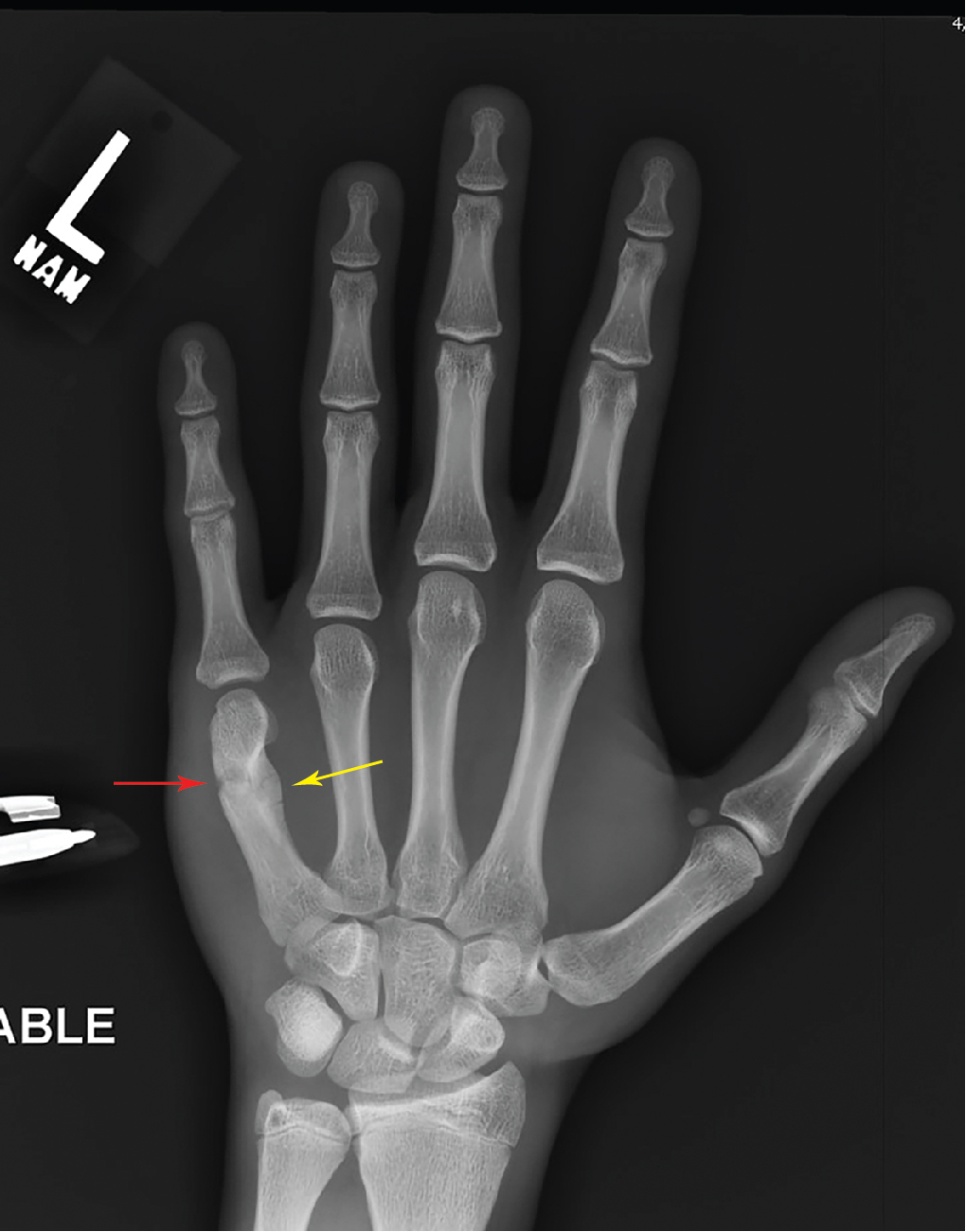Case presentation
A 15-year-old male presents with left hand pain after becoming angry and punching a wall. He did this several hours ago and his only complaint is medial hand pain; he denies digit, wrist, forearm, or elbow pain. He denies numbness or weakness. This is the second time he has sustained this injury. However, he was not seen the first time because he and his parents felt the injury was minimal but they both want to make sure that “nothing is broken this time.”
Imaging considerations
Plain radiography
A complete hand series consisting of posteroanterior (PA), lateral, and oblique views is standard when evaluating pediatric hand injuries. Important considerations are the degree of angulation, any associated injuries, and if rotation is present, as rotational deformities can result in significant long-term deformities. Intraarticular extension or involvement of a growth plate should also be noted. Plain radiographs of the affected hand are generally sufficient to identify the degree of metacarpal injury. If clinically indicated, appropriate radiographs of the wrist, forearm, and elbow should also be obtained.
Consideration should be given to physeal injuries when reviewing pediatric hand imaging. The physis is a vulnerable location in pediatric bones, particularly in young children, who tend to injure the physis by shear forces, whereas older patients (such as adolescents) tend to have compressive injuries, preserving the physis and injuring the shaft. If there is question regarding the presence of a fracture, comparative hand imaging may be employed but is rarely necessary.
Ultrasound (US)
US has become increasingly utilized in the acute care setting to identify fractures in the adult population. In one prospective study, US identified 38 of 39 fifth metacarpal fractures with a sensitivity of 97.4% and a specificity of 92.9%. However, patients included in this study were all over the age of 14 years. In another study of approximately 200 children aged 2 to 17 years, reported sensitivity and specificity for detecting hand fracture by US were 91% and 97%, respectively. Several studies in the adult population have obtained similar results ; large prospective studies in the pediatric population are lacking. While US has potential for evaluating suspected hand fractures, further study is needed in the pediatric population.
Computed tomography (CT) and magnetic resonance imaging (MRI)
While CT and MRI may be utilized to evaluate for specific injuries of the hand and wrist (e.g., occult scaphoid fracture) in the outpatient setting, these are of limited utility in the acute setting for suspected metacarpal fractures.
Imaging findings
Plain radiography of the left hand, including posteroanterior, lateral, and oblique views, is obtained. The hand series demonstrates an acute fracture of the fifth metacarpal ( Figs. 61.1–and 61.3 ) with volar angulation of the distal fracture fragment. There is a callus noted, evidence of a healing previous fracture.


Stay updated, free articles. Join our Telegram channel

Full access? Get Clinical Tree








